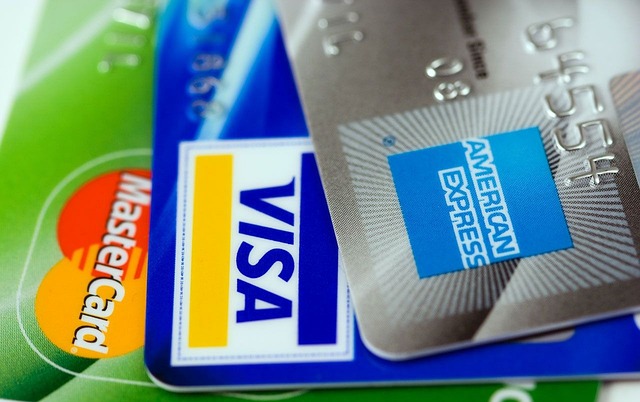THE PIVOTMINUTE
Sharing thoughts, ideas, perspectives, and the occasional opinion for those tracking enterprise-level financial solutions.Tell Me About the PivotMinute!
The PivotMinute newsletter is your go-to for the latest in fintech news — whether you’re a Pivot customer or just a friend of Pivot, we’ve got the scoop you need!
Pivot Payables needs the contact information you provide for us to contact you about our products and services. You may unsubscribe from these communications at any time.
Privacy Policy
PERSONAL EXPENSES ON THE COMPANY CARD? CATCH THEM EARLY!
Mistakes Happen
Occasionally, personal expenses end up on the company card, and when they do, it’s best to catch them early to sort things out smoothly.
Learn PivotEQ strategies to get card holders to report these quickly so accounting can handle ASAP >>>.
____________________________________________________

Virtual Credit Cards – When you know, you know!
Not Everyone Knows About Virtual Cards
A virtual card functions like a traditional credit card but without a physical form. It includes a card number, expiration date, and security code, enabling users to make online purchases or in-store purchases with merchants that accept tap-to-pay.
The key distinction is the absence of physical production and distribution costs, allowing issuers to generate unlimited card numbers. For example, with a 16-digit, Mastercard or Visa account number there can be over a quadrillion unique account numbers.
Intended Use is the Game Changer
Intended use is the ability to issue unlimited card numbers enables virtual cards to be tailored for specific purposes. Each card can be created for an intended use. Here are some examples:
- A business traveler uses a virtual card for expenses on an upcoming trip.
- A construction manager uses a virtual card for materials or permits for a project.
- A designer uses a virtual card to pay for a monthly subscription to a design prototyping tool.
This intended use capability is what makes virtual cards a game-changer for operational purchasing.
____________________________________________________


VIRTUAL CC SUPER Power ?
iNTENDED USE!
How Intended Use Transforms Operational Purchases
Virtual cards are transforming operational purchasing by combining control, security, and trust.
In this message, I’ll explain how their intended use capability drives this revolution.
Tailoring Virtual Cards for Specific Purposes
Intended use gives virtual cards the unique ability to be tailored for specific purposes, creating valuable opportunities for businesses.
Purchase Controls per Virtual Card
One key benefit is the ability to apply purchase controls to each virtual card. By defining a card’s intended use, businesses can make it comply with specific controls.
Powerful Purchase Controls
Here are the key controls virtual cards offer:
- Spending limits: Set maximum amounts for purchases.
- Effective date ranges: Specify when purchases can be made.
- Merchant restrictions: Limit purchases to specific merchants or categories.
- Single-use or multi-use: Choose whether the card can be used once or multiple times.
Why This Matters
These controls offer critical benefits for businesses:
- Stronger budget control: Spending limits and date ranges help ensure purchases stay within budget.
- Reduced fraud risk: Merchant controls prevent unauthorized purchases, and restricting cards to one-time use eliminates fraud for single-purchase purposes.
Trust Expands the Number and Scope of Purposes
The combination of stronger budget control and reduced fraud risk enables businesses to confidently trust individuals to make operational purchases. This trust forms the foundation of the revolutionary impact virtual cards have on operational purchasing. By expanding the number and scope of purchases that can be delegated, virtual cards help organizations operate more efficiently, securely, and effectively.
____________________________________________________



Disrupt operational purchasing with virtual credit cards
Virtual Cards: The Future of Operational Purchasing
Virtual cards—digital versions of physical credit cards—are transforming operational purchasing by combining efficiency with enhanced security. This innovative approach is poised to revolutionize how organizations handle purchasing.
As a recognized thought leader in virtual cards, I am reaching out to share insights on how virtual cards work and their potential benefits. Through a series of messages, I will introduce the concept of virtual cards and provide real-world examples of their use in operational purchasing, demonstrating their transformative impact.
What is Operational Purchasing?
Operational purchasing refers to the processes where individuals, both within and outside your organization, purchase goods or services essential to completing their work. Examples include covering the expenses involved in an upcoming business trip, purchasing construction materials for a job or covering necessary permits or fees for cell tower repairs.
____________________________________________________

CREDIT CARD RECONCILATION PROCESS = YIKES!
SAP Concur Edition – Got Concur Solutions On Deck or Thinking About It? Read On!
Say Hello to Carolyn Conroy at Vantage Partners
Carolyn, the Finance Manager at Vantage Partners, used to spend 40+ hours each month drowning in a sea of credit card statements, expense reports, and endless follow-ups with cardholders who were… a little too “creative” with their expense categorization.
The Easy Part.
Most employees had company-paid cards and added transactions to their Concur expense reports … eventually.
The Hard Part?
Reconciling those statements—think “finance version of a treasure hunt,” but with less gold and more receipts.
Fast Forward to Today: The New Easy Part?
Credit card reconciliation is fully automated! Now Carolyn’s got a whole week back in her month. So, she’s not just balancing the books—she’s got time to balance her sanity too!
Hear Carolyn’s Story Firsthand — You don’t want to miss this >>>
____________________________________________________
